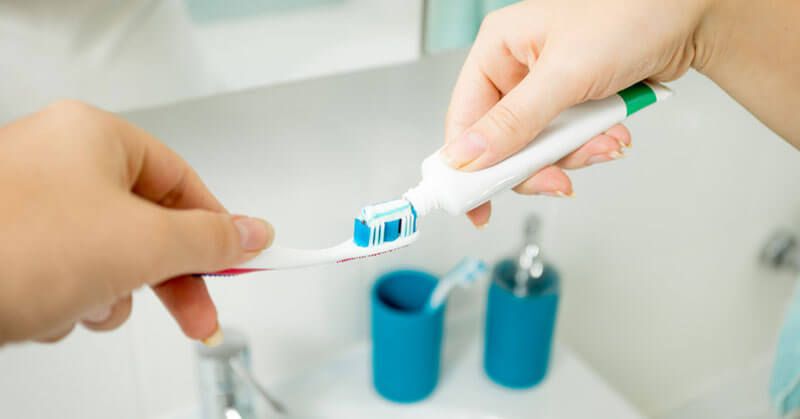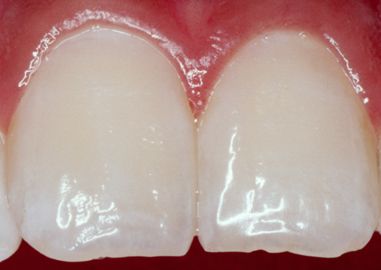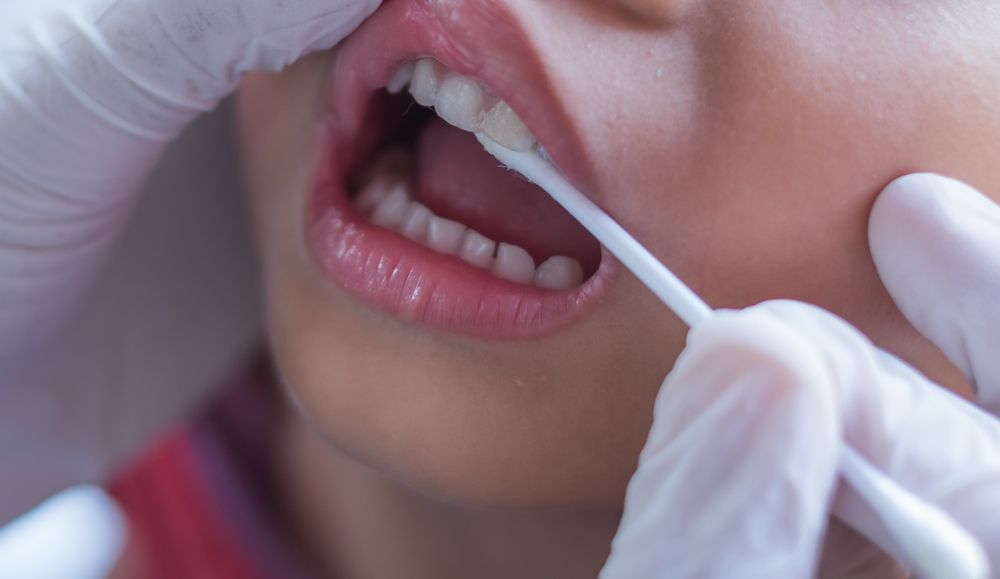Fluoride is a mineral naturally occurring in water, soil, and foods. When the natural fluoride levels in drinking water are significantly higher than the recommended range, the risk for a crippling chronic condition called fluorosis to occur increases. In the places or communities where the natural levels are over 2 ppm, the CDC (Centers for Disease Control and Prevention) recommends water intake for children from other sources.
The ingestion of excess fluoride mostly drinking water causes fluorosis that affects both bones as well as teeth. Dental fluorosis and skeletal fluorosis are the two types of fluorosis.
While the low levels of fluoride intake prevent tooth decay, the moderate amounts result in dental effects (dental fluorosis) and long-term ingestion of great amounts to potentially severe skeletal problems with accumulation of fluoride in the bones over time (skeletal fluorosis). The clinical dental fluorosis is identified by staining and pitting of teeth. In more severe cases, the enamel can damage.
Let’s learn about the scope, distribution, causes, risk factors, symptoms, diagnosis, treatment, and preventions.
Scope & Distribution of Fluorosis

The prevalence of dental and skeletal fluorosis is not sufficiently known. It is thought that fluorosis affects millions globally, but mild or very mild forms are most frequent.
The presence of fluoride in water is mostly based on geological origins. The water with a high level of fluoride content is often found at the foot of high mountains and regions where sea’s geological deposits are made.
The fluoride belts where fluorosis has been reported include the land across Syria through Egypt, Sudan, Kenya, Algeria, Libya, and Jordan; and another one stretching from Turkey through Iran, India, Afghanistan, northern Thailand, Iraq, and China. The Americas and Japan also have similar belts.
Due to the concern that the children may be ingesting too much fluoride, the Health and Human Services Department in January 2011 decreased the recommended level of fluoride in drinking water. Also, the Environmental Protection Agency is evaluating these rules on the upper limit of fluoride levels in drinking water.
Causes & Risk Factors

Fluorosis is caused by exposure to excessive fluorides in food, air (gaseous industrial waste), excessive toothpaste use and especially drinking water. It is primarily a water-related disease as fluorosis is usually because of accidental contamination drinking water. Fires or explosions could also be the causes, and acute high-level fluoride exposure is rarely a cause.
As per the WHO guideline value for fluoride in water that is above 1.5 mg per liter of water, the moderate level chronic exposure is more prevalent. The general state of health, an individual’s diet, and body’s ability to remove fluoride affect the way fluoride exposure manifests.
A major cause of fluorosis is the improper use of fluoride-containing dental products like mouthwash and toothpaste. In some cases, children love the taste of fluoridated toothpaste so much that they swallow it rather than spitting it out. Also, during the early years of childhood, consuming higher-than-prescribed amounts of fluoride supplement can result in fluorosis. Moreover, consuming a fluoride supplement when fluoridated can cause fluorosis when fluoride-fortified fruit juices and soft drinks or fluoridated water already provide the required amount.
Some of the other risk factors comprise:
- A malnourished individual or one having calcium deficiency is more susceptible to developing dental and skeletal fluorosis.
- Chewing tobacco or betel nut (areca nut or supari)
- Intake of fluoridated beverages, black rock salt (kala namak)-rich and red rock salt-rich foods, beverages, and snacks
- Fluoride-rich foods like gelatin, tea, chicken’s skin, ocean fish, fluoridated salt, and food contaminated with pesticides and post-harvest fumigants
- Fat-rich diets are found to increase fluoride deposition in bones.
- Studies show that brushing of teeth with fluoridated toothpaste can cause fluoride absorption within minutes. The saliva from the oral cavity also reveals high fluoride content when checked for fluoride content.
- During the early years of life when teeth formation occurs, the fluoride exposure can lead to dental fluorosis.
- The fluoride coming from environmental sources such as industrial pollution and cigarette smoking
- Fluorosis is more likely to occur in severe forms in semi-arid tropical areas of the world. That’s because people here have a higher drinking water consumption, making them more prone to the disease when compared to other colder areas with lower water consumption rate (even when the fluoride levels in water are same).
- Taking certain steroids, anti-fungal drugs, fluoroquinolone antibiotic drugs, anti-inflammatory drugs, antacids, antidepressants, and drugs for arthritis, cholesterol-lowering drugs, drugs for osteoporosis and otosclerosis and many other drugs containing fluoride can be responsible for fluoride toxicity.
- Brick tea and fluoride-contaminated food (during dying chilies or corn with coal briquettes) are behind fluoride toxicity in China
So what’s the mechanism after fluoride intake? As soon as the fluoride enters the body either through the gastrointestinal route or blood vessels in the mouth, it reaches several organs and body tissues. Bone and tooth which have the highest calcium content in the body attract the maximum fluoride amount and is deposits as calcium fluorapatite crystals. Simultaneously, from certain areas in the bone and tooth, the unbound calcium disappears.
Signs & Symptoms

It’s not essential for all symptoms to occur simultaneously. The severity and duration of fluorosis symptoms may vary based on a person’s age, environment, nutritional status, the likelihood of allergies, kidney function, genetic background, amount of fluoride intake, and other factors like water hardness because of calcium and magnesium presence.
The signs and symptoms of fluorosis range from specks or streaks (may not be noticeable) to dark brown stains and rough, pitted enamel (hard to clean).
The severity of fluorosis is rated on the following categories since the 1930’s:
- Questionable: Slight changes are seen in the enamel, from a few white flecks to occasional white spots.
- Very mild: The small opaque paper-white areas get scattered in more than 25% of the tooth surface.
- Mild: The opaque white areas over the surface cover a larger area but still affect nearly half the surface.
- Moderate: The opaque white areas affect more than half the enamel surface.
- Severe: All the enamel surfaces become affected. The teeth also have discrete or adjoining pitting.
The different symptoms of fluorosis include:
- Dental fluorosis symptoms
The clinical dental fluorosis can be noticed through pitting and staining of teeth. In even severe cases, the whole of enamel may become damaged. The fluoride ingestion after six years’ age won’t lead to dental fluorosis. The teeth could be chalky white and black, white, yellow, or brown spots or streaks may be present on the enamel surface. Discoloration occurs away from gums and is bilaterally symmetrical.
- Skeletal fluorosis symptoms
Skeletal fluorosis’ early symptoms are stiffness and joint pain. In severe cases, the bone structure may change, and ligaments may calcify, leading to pain and muscle impairment. The contraction of vertebral and intervertebral foramen lays pressure on nerves, blood vessels which leads to pain and paralysis.
- Other symptoms
-
Neurological: Depression, excessive thirst, tingling sensation in fingers and toes, nervousness, tendency to urinate, seizures
-
Allergic: Perivascular inflammation and skin rashes that fade and clear within 7-10 days
-
Effects on the fetus: A mother consuming water/food having a high fluoride concentration during pregnancy/breastfeeding may experience fetal damage. Stillbirths, abortions, and children with birth defects are common in endemic areas.
-
Gastrointestinal: Nausea, vomiting, stomach ache, excessive saliva
-
Muscular: Muscle spasms, stiffness, pain, and weakness, loss of muscle power, difficulty in carrying out normal routine activities.
-
Lowered hemoglobin levels
-
Ligaments and blood vessel calcification: Hardening and calcification of soft tissues like blood vessels and ligaments, resulting in blockage of blood vessels.
-
Lesser volumes of urine (yellow-red color), itching in the urinary tract region
In fluorosis-endemic and rural regions, these early signs help in early detection of several cases. Prompt intervention programmes like provision of safe drinking water in such cases have given considerable relief within a short time.
Diagnosis

All the substances which contain fluoride must be avoided at the time of diagnosis. If the symptoms are due to fluorosis, they should go away to an extent in a week and vanish completely in weeks. The gastrointestinal signs resolve within 15 days.
- Physical Examinations
These tests are done to detect skeletal fluorosis in endemic areas:
-
Chin test: The individual has to touch the anterior wall of the chest with the chin. If he/she experiences pain or stiffness in the neck, he or she might not be able to bend the neck, touching the chest with chin isn’t possible.
-
Stretch test: The individual has to stretch the arm sideways, fold at the elbow, and touch the back of the head. In case of pain and stiffness, it wouldn’t be possible to touch the back of the head.
-
The individual has to lift a coin from the floor without a knee bend. A person having skeletal fluorosis won't be able to lift a coin without bending the large joints of the lower extremity.
- SA/GAG (Sialic Acid/GlycosAminoGlycan) Test
It is for early detection or diagnosis of fluoride toxicity. SA/GAG value is decreased in fluorosis and is considerably high in ankylosing spondylitis. This value shows no great change in arthritis, osteoporosis, and spondylosis.
- Radiographs
An X-ray would help in identifying the increased girth, calcified ligaments, and bone density & thickness. A majority of ill-effects of fluoride are identified in the knee, spine, shoulder, knee and pelvic joints. It also affects small joints of the hands and feet.
- Estimating Hemoglobin Levels
It is used to detect anemia.
- Estimating Fluoride Content
- Drinking water: 1 ppm is regarded as the allowed upper limit for fluoride content in drinking water.
- Blood (serum): The serum fluoride levels may or may not be useful as fluoride in circulation isn’t ever steady. So it gets diverted to other tissues and is absorbed by tissues and excreted.
- Urine (go for 24 hours collection if possible): The urinary fluoride level proves more useful in comparison to the blood fluoride level. If an individual ingests water, food, drugs or any other substance with fluoride contamination, urinary fluoride will be high.
Fluorosis Treatment

In a lot of cases, fluorosis is so mild that no treatment is required. Also, no treatment is available for severe cases of skeletal fluorosis, and only efforts can be made to lessen the disability.
Both skeletal fluorosis and dental fluorosis are irreversible, and there isn’t any specific treatment. The only cure is prevention which includes keeping fluoride intake within safe limits.
In dental fluorosis, it may only affect the back teeth where it’s not invisible. The teeth’s appearance due to moderate/severe fluorosis can be considerably improved through several techniques (masking the stains). The dental fluorosis treatment techniques include composite bonding, MI paste (sometimes combined with microabrasion), tooth whitening (mild fluorosis cases), dental crown, and porcelain veneers.
Fluorosis Prevention

Fluorosis can be prevented by avoiding high intake of fluoride by individuals or communities. To minimize and prevent excessive fluoride intake and its harmful effects, adopt measures like use of alternative sources, improvement of nutritional status of people at risk and defluoridation of water (removal of excessive fluoride from drinking water). Proper dental care is the key to dental fluorosis prevention.
Moreover, parental vigilance plays a crucial role in the prevention of fluorosis. If water comes from a public system, your dentist/doctor and your local water authority/public health department can tell you about its fluoride content. After finding out about the fluoride your child gets from drinking water and other fluoride sources (soft drinks and fruit juices), you should ask the dentist if the child needs a fluoride supplement.
Keep all the fluoride-rich products like mouth rinse, toothpaste, and supplements out of young children's reach. Make sure the children are encouraged to spit out the toothpaste while brushing teeth and avoid flavored toothpaste that children are more likely to swallow. Monitor their toothpaste use. Though fluoride toxicity typically does not have serious consequences, it sends many children to emergency rooms every year.
Some other important points to be kept in mind:
-
Imparting health education regarding fluorosis and the right consumption of fluorides in drinking water & food is essential to prevent and control the condition.
-
The mothers in affected regions should consider breastfeeding as breast milk is usually low in fluoride.
-
Avoid the high-fluoride products
-
Promote the intake of foods that are rich in Calcium, Iron, Vitamin C and other antioxidants like milk, curd, green leafy vegetables, and fruits

